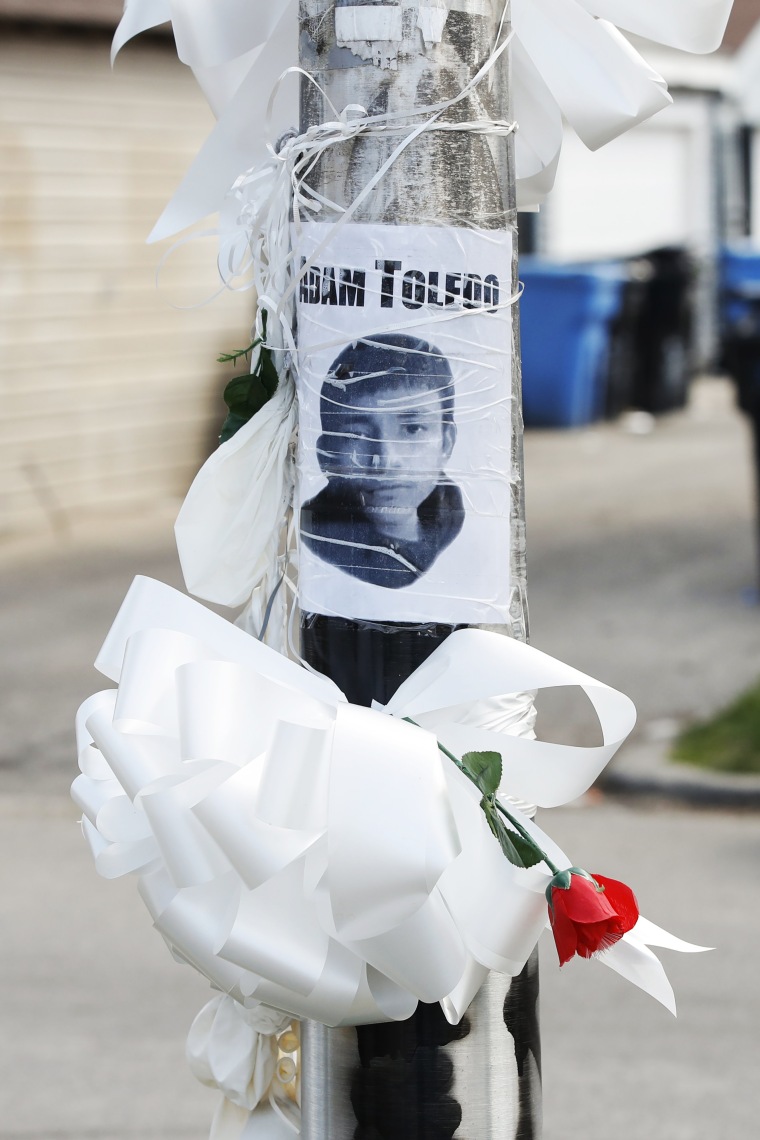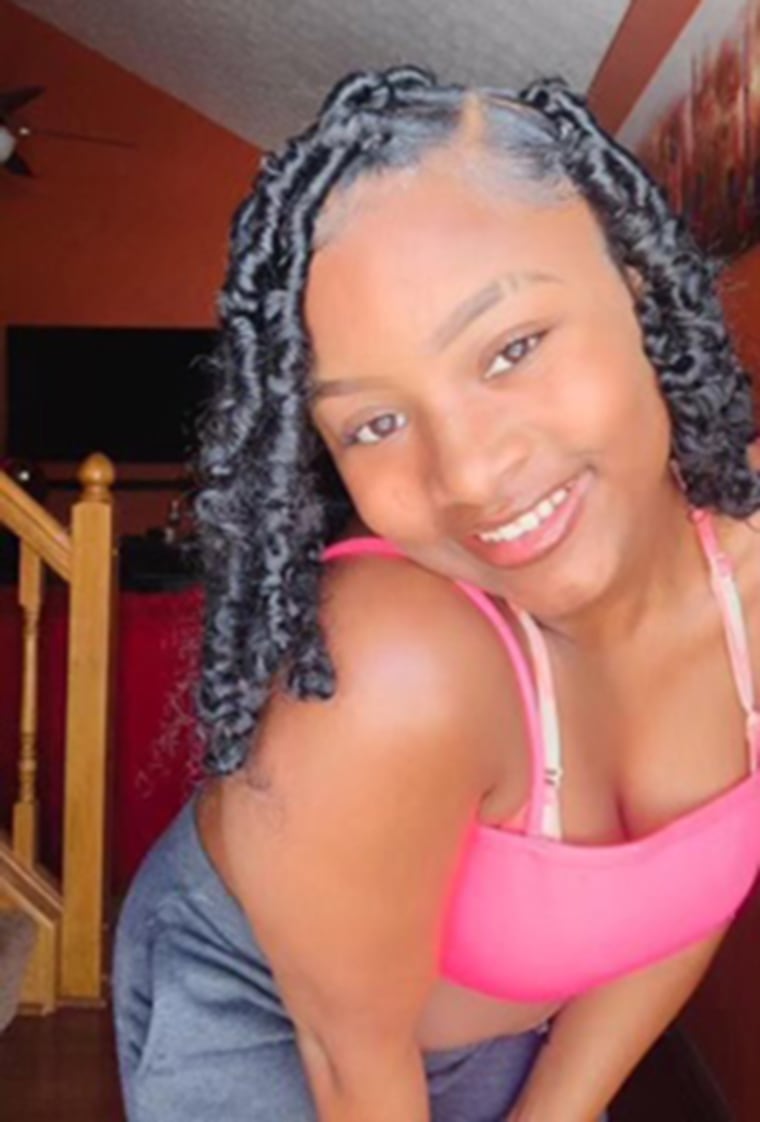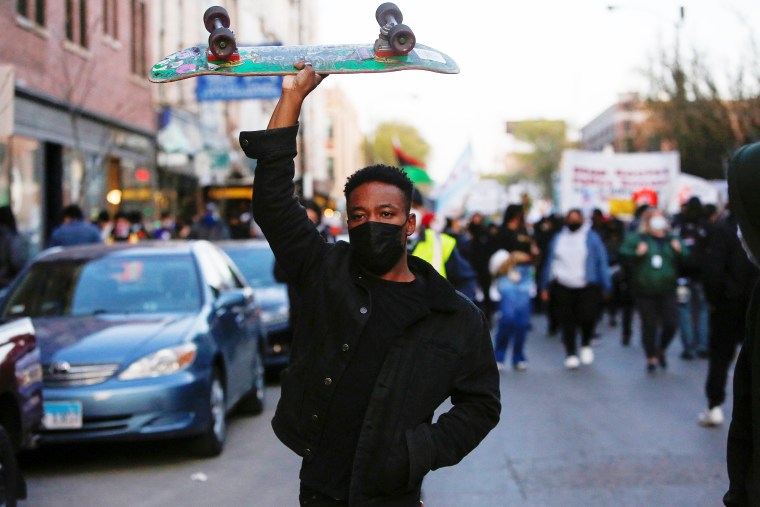The recent deaths of two teenagers at the hands of police — Adam Toledo, 13, in Chicago and Ma'Khia Bryant, 16, in Columbus, Ohio — illustrate a glaring omission in policing practices and oversight.
Policies meant to stop police killings and the use of excessive force against civilians say little about interactions with children. The lack of oversight applies in schools across the country, where more officers have been called upon to patrol the halls, as well as on the streets. No sweeping federal laws regulate the police use of force against those 17 and under, and most law enforcement agencies don't have clear protocols.
"Policies seem to apply to both adults and juveniles equally — looking at factors like the threat posed by the subject, the physical size of the subject, how they're reacting to the police officer," said Jessica Huff, a research associate at the University of Cincinnati's Center for Police Research and Policy. "And a lot of those things aren't necessarily age-specific."
Organizers, academics and advocates have several suggestions about what should be done: Some say police need child-specific training, while others, including those who want to abolish the police, say that, short of full abolition, there should be fewer police encounters with minors and stricter legislation to oversee it. In most jurisdictions, police officers are directed to use their own discretion, said Christina Quaranta, executive director of the Connecticut Justice Alliance, an advocacy group.
"At worst," she said, "it leaves the door open for the police officer to become violent with a young person and know there's not a certain piece of legislation or a law that's been passed that could push back on what they did."
Lack of clear guidelines
Before Adam's and Ma'Khia's deaths, video of officers pepper-spraying a 9-year-old girl in Rochester, New York, choking a 13-year-old boy in Baton Rouge, Louisiana, and wrestling an 11-year-old to the ground in Farmington, New Mexico, had thrust the issue of police encounters with children and teenagers into the spotlight.

Lisa Thurau, founder of Strategies for Youth, which trains police officers to interact with children and tracks use-of-force lawsuits, said organizations like the Commission on Accreditation for Law Enforcement Agencies, or CALEA, develop standards for law enforcement agencies — including releasing minors to their families instead of arresting them and referring them to counseling agencies instead of sending them to court. But the lack of federal oversight means ensuring that those standards are followed are an "aspirational goal" at best, she said.
"Even the legislative approach cannot always provide the level of protection you might need," Thurau said. "Most of the interactions between law enforcement and kids" aren't with federal agents, but through local police. "So you'd need to have a terrific system for ensuring oversight at the state level. And what we've seen is that's the first thing that gets cut."
Thurau pointed to a report on a criminal justice reform law passed in Massachusetts in 2018, which showed that some members of the state's Juvenile Justice Policy and Data Board opposed efforts to develop youth policies and training because of the "administrative costs and challenges."
Travis Parrish, a spokesperson for CALEA, said the agency oversees 1,500 of the 18,000 law enforcement agencies in the country. Its mandatory juvenile operations standard urges law enforcement agencies to use the "least coercive" methods and to establish specific criteria to determine which of several options should be used when dealing with minors. Accredited law enforcement agencies must adhere to the juvenile standard to maintain their accreditation.
Parrish said the organization conducts annual reviews, along with physical, onsite reviews, every four years to make sure agencies are in compliance. Records show that CALEA accredited the Columbus police, responsible for Ma'Khia's death, seven times (most recently in 2017). And the Chicago Police Department was accredited in 2018.
Policing can be difficult to change, especially without clearly defined federal and state rules, Huff said. Thurau said that law enforcement agencies generally set their own guidelines and that most have no policy, implement vague rules after high-profile incidents or don't make changes after such incidents at all.
An incident in which a McKinney, Texas, police officer body-slammed a 15-year-old girl at a pool party in 2015 resulted in the police department's adopting a youth policy requiring officers to use the "least coercive methods" with children. A school police officer in Orlando, Florida, who apprehended a crying 6-year-old with zip ties prompted the police department to require the deputy chief's approval to arrest children 12 and under.
And the Atlanta Police Department is standing by its decision to give officers full discretion to restrain and arrest children after a report revealed that the city's officers had arrested more than 250 children 12 years old or younger in five years, Sgt. Jarius Daugherty said in a statement.
The federal minimum age of delinquency is 7, but it varies among states. Police can arrest children as young as 6 in North Carolina. Eleven states bar arrests under age 10. Thirty-four states don't specify ages at which children can be arrested. Advocates say raising the age would stop states from criminalizing childhood behavior, like detaining a 6-year-old for picking a flower.
The Federal Juvenile Delinquency Act focuses on curbing youth crime but largely defers to states to make delinquency decisions. Juvenile arrest rates have been declining since the mid-1990s, but about 20,000 children 10 and under were still arrested from 2015 to 2019, according to the FBI. Even before children are swept into the court system, facing potential violence and abuse in juvenile facilities, initial interactions with police have proven to be dangerous.
Robin Engel, director of the University of Cincinnati police research center, said policies governing police interactions with children must take into account adolescent development, age-appropriate communication and mental, behavioral or intellectual disabilities.
That is one of the reasons legislators in Illinois, Connecticut, Pennsylvania and Montana, as well as Cleveland, recently filed bills to curb police violence against children. And advocacy groups like the Connecticut Justice Alliance, the Urban Youth Collaborative, Make the Road, Black Lives Matter at School, Padres & Jóvenes Unidos and others have spent years fighting for policy changes.
A history of racism in policing children
The country's first juvenile court system was established in 1899 to act as "a kind and just parent." A little more than 50 years later, however, FBI Director J. Edgar Hoover began to vow to get "tough" on the "flood tide" of youth crime. The shift also allowed the racist criminalization of children.

A 1964 study found that police officers who had broad discretion when engaging with children were more punitive in interactions with Black children. Today, Black children are five times more likely to be incarcerated than their white peers, according to a report from The Sentencing Project, a research and advocacy center aimed at reducing incarceration. About 14 percent of all minors in the country are Black, but Black children make up 77 percent of people in juvenile facilities. And police often criminalize Black children for conduct considered common among kids — like mouthing off or fighting at school.
William Bentley said he was 14 when he was beaten by at least five police officers at Strawberry Mansion High School in Philadelphia, once known as one of the country's "most dangerous" schools. He said an officer approached him after he accidentally entered the wrong classroom.
"The police officer grabbed my neck and choked me. I couldn't breathe," said Bentley, who said he shook himself free and fled. "I was gripped up, slammed and beaten like I was an adult. They never treated me like a kid. The police were 'supposed to keep us safe,' but it felt more like they were guards. It was like we were inmates."
Bentley was arrested and charged with assaulting a police officer. Because of that and a subsequent armed robbery conviction, he spent six months in the Philadelphia Industrial Correctional Center, an adult jail, before he served three years at George Junior Republic, an all-boys residential center, he said.
Bentley, 20, works with grassroots organizations, including the Youth Art & Self-Empowerment Project and the Philadelphia Community Bail Fund, to end pretrial detention and youth incarceration and to keep children from being charged as adults.
Neither Strawberry Mansion High School administrators nor the school district's office of school safety responded to a request for comment.
Violent interactions in schools
Because many interactions between Black children and police officers happen in schools, advocates say they've focused on that environment to reduce violence.
Schools with larger Black and Latino populations are more likely to have police officers in the halls, metal detectors and security cameras. That has prompted organizers to demand that police officers be removed from schools entirely and that federal officials stop pouring millions of dollars into school policing programs under the guise of protecting students from school shooters.
"There is no substantial evidence that police and hardened security measures make schools any safer," said Dmitri Holtzman, the director of education justice campaigns at the Center for Popular Democracy, a social justice advocacy group. "We should be maximizing interactions between students and their teachers, counselors, nurses, their interactions and participation in sports, arts and music and cultural programs. These are the things that will create a safe and healthy schooling environment, not interactions with police, metal detectors."
Steve Teske, chief judge of the juvenile court in Clayton County, Georgia, said school resource officer programs in the county succeed when departments train officers to interact with minors and establish rules for such interactions. Teske, who was a parole officer for 10 years before he became a judge, used his judicial role to begin a child-centered training model. He said that since the policy was implemented in 2003, the county's juvenile arrest rates have decreased by 80 percent and graduation rates have increased every year.
However, officer presence has done little to curb gun violence; a 2018 Washington Post report found that officers successfully intervened in only two of nearly 200 gun violence incidents in schools across the country. And a recent report showed resource officers stunning, assaulting or pepper-spraying dozens of students over two years.
An organizer of Black Lives Matter at Schools, Erika Strauss Chavarria, a high school Spanish teacher in Columbia, Maryland, said she has seen police officers follow groups of students home from school. "The same rules they have on the streets is the same rule they have in schools," she said. "The same type of brutality and use of force and intimidation and fear."
Because of mounting pressure to act, school districts in Minneapolis; Milwaukee; Denver; Portland, Oregon; and Oakland, California, have suspended or phased out their school resource officer programs and cut ties with police in the last year. Meanwhile, proposed policies and legislation, including the Youth Mandate for Education and Liberation and the federal Counseling Not Criminalization in Schools Act, call on federal leaders to remove officers from schools nationwide and divert funding from school policing to community programs.
Is change to come?
A renewed focus on police use of force overall could spur a change in policy about interactions with children. Federal and state leaders have been slow to limit the use of force in general, but Cleveland, Illinois, Connecticut, Pennsylvania and Montana have proposed policies and legislation to address the use of force against youths and in youth arrests.
Cleveland, where police fatally shot and killed Tamir Rice, 12, as he played with a toy gun in 2014, is one of the few cities to have developed an in-depth guide to reduce such use of force. The city's policy will require police officers to consider a person's perceived age, physical build and emotional state before using force on anyone under age 18. Community members, including Rice's mother, said that the policy is "weak" and that it doesn't go far enough.
Organizers in Connecticut are working to increase the minimum age of delinquency to 12, from 7, said Quaranta, of the Connecticut Justice Alliance. And the Pennsylvania bill calls for experts to develop a policy to prevent the excessive use of force against children and teens that the state will then follow. But some advocates say efforts to end the police use of force against children must take a critical look at policing itself.
"I don't think working with police or just reducing the number of police is adequate. It's not about cutting down or reducing. It's about abolishing and redirecting funds to real community safety programs," Chavarria said.
"We're beyond training. No matter how much training they have with youth, cultural bias training or whatever, none of that supersedes their main training: to be a police officer. They will arrest our kids and use excessive force if they deem it necessary."


